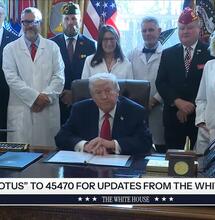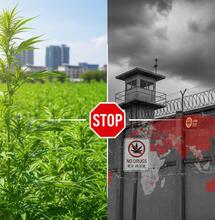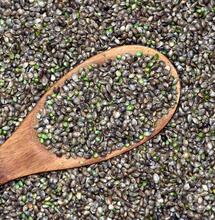NFL Pot Policy Changed Last Year. Now They Will Fund Research for Medical Marijuana

For years, the NFL suspended players if they repeatedly tested positive for the use of marijuana. But times are changing, and so are NFL views and regulations on pot use for players' pain management.
With loads of punching and kicking and other action, American football can get as brutal as it gets. Everyone who plays this sport sooner or later suffers a concussion or other form of injury. While the NFL has protocols on protecting its players, the league has been vocal against the use of cannabis up until quite recently. Marijuana was simply a deal breaker if a player wanted to treat pain from injuries with it and if routine urine testing commissioned by the sports authority returned positive on THC.
The random routine testing involved every player getting tested at least once during the offseason. And during the regular season, at least ten players from each team would get selected for the test. If a player tested at least once positive for THC, their chances of getting selected for a future test significantly increased.
According to the old NFL protocols, players caught using marijuana were enrolled in a substance abuse program. If a player failed to return a negative test two times in a row during random checks, there followed a two-game ban. A third and fourth fail equaled a four-game ban, and a fifth failed test indicated a 10-game ban. Any more failed tests than that led to an expulsion from the league.
For years, the NFL kept this rigid stance on marijuana. Detecting as little as 35 nanograms of THC per ml in the test sample was enough for someone to get in the loop of troubles. Using cannabis was for a long time out of reach for players who sought to regulate pain and injuries with it (although some players did so, passing urine drug testing successfully).
Looking at the stats and history of the NFL — some of it is staggering. A significant chunk of players are reported to have missed a season because of an injury, and a lot of them have been found to use opioids to treat pain. In worse cases, talented players retire early due to severe injury. Add to that an unfriendly cannabis policy. Players who missed at least one game during a season went from 5,000 in 2015 up more than 8,000 in 2016. While opioids help pain management, the adverse effects of opioid prescription drugs are well noted, not to mention their addictive nature (read more here). But players did get penalties for cannabis use.
The NFL finally came to sense in March 2020 when it announced a major shift of its policy on drugs, i.e. when the collective bargaining agreement came into force. The NFL and NFLPA agreed that the league's stance on cannabis should include better care of its players instead of penalizing them for medical cannabis use.
The new policy meant players would no longer be subjected to bans if they return a positive marijuana test. Instead, authorities introduced a fine that's the equivalent of three week's wages. The new policy also reduced the testing period from four months to two weeks at the beginning of the training camp in August, so players currently can't fail a drug screening for marijuana use at any other time. Finally, the policy increased the 35ng/ml limit to 150ng/ml, which is the active threshold in the Baseball League.
A year before introducing this major policy shift, the NFL and NFLPA already had agreed to commission a mental health practitioner for each team. They also decided to form a joint committee to analyze and assess pain management alternatives in a bid to reduce players' reliance on painkillers.
All of these changes could have happened much earlier, but it is what it is. The important thing is that the NFL and NFLPA have finally turned a new page, and they are proving that with yet another major announcement as of this summer. Namely, the pain management committee of the NFL and the NFL Players Association will allot $1 million in funding for research into pain management and cannabinoids.
The research should help the league learn more about the safety of using cannabis and CBD as alternatives to opioids. According to the fund scheme announcement, up to five grants are expected to be awarded around Thanksgiving.
Dr. Allen Sills, the league's chief medical officer, said one of the questions that the league wants to answer about medical marijuana usage is how cannabis and CBD used for pain treatment can affect performance in elite athletes?
"There is a need for better information, better science," Hill said.
He added: "When we talk about having elite athletes use CBD to treat pain, we want to make sure it's, No. 1 safe, and No. 2 efficacious. I don't think we're at that point yet."
It's the kind of research that will have a following in a broader societal circle for sure. As pain relief continues to be one of the most frequent medical reasons why doctors prescribe medical marijuana to US patients, any research on pain management use of cannabis is of value to medical science in general and can influence various future policies on how marijuana is prescribed for medical purposes.







